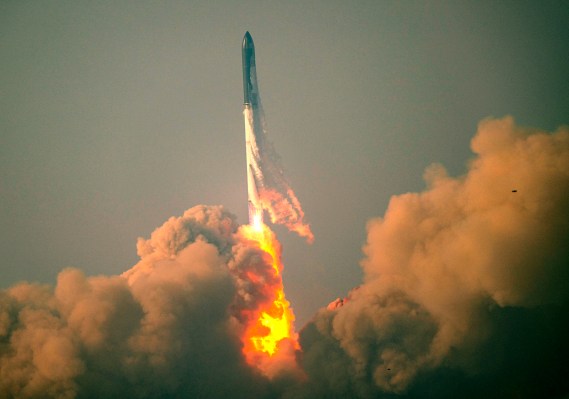Watch Starship’s second integrated flight test → https://t.co/bJFjLCiTbK https://t.co/cahoRQ72lm
— SpaceX (@SpaceX) November 18, 2023
SpaceX flew Starship, the most powerful rocket ever built, for the second time today — and even though both the Super Heavy booster and the Starship upper stage had to be blown up in midair, it was still a huge success for the company best known for taking a rapidly iterative approach to hardware development.
The rocket lifted off at 7:03 a.m. CST from SpaceX’s massive Starship development and launch facilities near Boca Chica, Texas. At liftoff, all 33 Raptor engines on the Super Heavy booster were lit and none went out during the mission, which is a huge improvement from the first launch, which lost around six engines between lift-off and flight.
The launch infrastructure, including the orbital launch mount that the vehicle sits on prior to lift-off, also seemed to have fared better this time around. This suggests that the new water deluge system, which floods the launch area with water at engine ignition, seemed to have successfully protected the infrastructure. (During the first launch, the power of the Raptor engines igniting sent huge chunks of concrete and dust into the air, effectively destroying the orbital launch mount.)
The other major win came during stage separation. The first Starship orbital flight test didn’t get this far. But the second time around, using a novel stage separation technique known as “hot staging,” where Starship’s engines actually ignite to push the Booster away, SpaceX managed to pull it off.
Shortly after this point, the automated flight termination system (FTS) onboard the Super Heavy booster was triggered, leading to a “rapid unscheduled disassembly” — in other words, it was blown up. It is not clear why this occurred, though SpaceX hosts on the company’s live launch webcast said the team will be able to use the data from the moments post-hot staging and pre-explosion to better understand the booster’s performance.
This same fate eventually came to the Starship upper stage. Before second engine cutoff, when Starship would’ve powered down its six engines and continued its ascent, SpaceX hosts announced that they had lost data from the second stage. The hosts then said that the automated FTS was activated — though again, it’s unclear why.
The mission concluded around seven minutes after lift-off. No people or payload were onboard the vehicle. The eventual aim during a flight test is for Starship to successfully complete engine cutoff, glide more than halfway around Earth and splash down in the Pacific Ocean.
“An incredibly successful day, even though we did have a ‘rapid unscheduled disassembly’ both of the Super Heavy booster and the ship,” SpaceX’s senior quality systems engineering manager Kate Tice said on the webcast.
Standing at 397 feet tall and around 30 meters in diameter, Starship is the largest rocket humanity has ever built. To put things in perspective, Super Heavy’s 33 Raptor engines produce 16.7 million pounds of thrust — many times more than the 1.7 million pounds of thrust of Falcon 9, SpaceX’s workhorse rocket.
At this point, getting Starship operational is key to SpaceX’s mission. In the nearer term, that mission is being able to launch many, many dozens of heavier Starlink satellites at once; in the longer term, that’s using the cash flow from the improved Starlink constellation to fund a mission to Mars.
But SpaceX is not the only entity banking on Starship’s success. NASA has also pegged itself to SpaceX’s ship, awarding the company contracts topping out at around $4 billion to develop a lunar landing system using Starship to bring astronauts to the moon for the space agency’s Artemis program. That first landing mission, Artemis III, is currently slated for 2025.
